QuestionChris - Thank you so, so much. One more ? for you: when my filter is running at full capacity, it seems that the water flow from the filter is so powerful that it looks like it's creating a lot of turbulance in the tank. Is this okay or should I reduce the flow? I am just concerned that if I reduce the flow, the water will not be filtered efficiently or fast enough for a five gallon tank. Thanks again - Nancy
--------------------
Followup To
Question -
I have a five gallon acryllic tank w/heater, hood, a marineland emperor power filter, plastic plants, gravel and some rocks. I change about 1/4 of the water weekly and use distilled water or (treated) filtered water. Hardness and PH I think is pretty neutral. The temp is around 75-78 degrees F. After about 3 weeks I get these things that stick all over the sides of the tank. They are transparent, about 1/4-1/2 cm long half their length is tube like with a sort of roundish end/tail. They are also attached to the heater, plants, gravel and filter and are long enough to sway in the current created by the filter. I had a beta, a guppy, 2 tetras and a small catfish. They all died within a week after this stuff appeared. I emptied the tank, cleaned everything including the gravel, and started over. After adding 2 guppies and a catfish, 3 weeks later they reappeared and so far only the catfish is still alive. Are these a type of parasite? I had reduced the flow of water through the filter because it seemed that it was creating too much turbulence (as if the filter is too powerful for my size tank). Should I keep the filter flowing at full power? I had also added stress treatment periodically hoping it would help and change the filter every 3 weeks. Before I try to start over again (I'll have to empty and clean the tank again and its contents) I think I need some good advice. HELP!
Answer -
Hi Nancy;
I think you actually have 2 problems leading to the death of your fish. The most serious one is "New Tank Syndrome". Changing the filter every 3 weeks before it has enough time to fully establish a bacteria balance is not allowing the tank to finish it's initial cycling. For the first 6 to 8 weeks, the filter should not be changed at all. Rinse the pad gently in a container of tank water to clear it if it becomes plugged. Just don't use a new one. You throw away the beneficial bacteria that your fish need in there to consume their wastes. It is a very small tank to have so many fish in it to get it started too. The break-in period is very hard on fish. Too many fish makes it even harder. They died at the 3 week period because nitrites get so high at this point they can't breathe. It is a natural part of the break-in, but very toxic.
The second problem is overfeeding. I really think the little critters you are seeing are a flatworm like planaria. They are harmless to your fish, but are thriving on the extra food they are being provided. If they were a parasite they would attach to your fish. Cut back on food to whatever the fish will totally finish from all areas of the tank in 5 minutes. The worms will starve out.
The solution for your tank is to clean it out well, add one small fish and feed VERY lightly for the next 6 to 8 weeks. Don't add any more fish until the nitrites and ammonia are at "zero". The fish store can test these for you. Don't bother testing the nitrates, just nitrites. They are very different.
About distilled water;
Use it only occasionally. The fish need minerals found in tap water. Distilled has no minerals so it doesn't provide what your fish need. If living in only distilled for extended periods, fish can die. Unless there is something seriously wrong with your tap water, use it for water changes. Add a good water conditioner and it will instantly make it safe for your fish. Topping off the tank from evaporation is not equal to a water change. Water must be removed and replaced in order for the fish to benefit.
Here is my article on new tanks that explains more about the process and how to handle it;
**********
New Tank Syndrome or Break-in Period
So you have a new tank and you filled it up, put the filter together, mounted the heater into place and turned on the lights. You have all the plants and decorations where you want them....
You are ready for fish.
But, your filter is not ready for a full tank of fish yet.
The filter is running and moving the water and cleaning out crud, right? Of course!
But a very important part of your filter is the part you can't see. An aquarium filter removes the larger visible stuff, but it also must remove the dissolved fish waste that turns into ammonia in the water. To do this, special bacteria must grow in the filter system and on the particles of gravel in the bottom of your tank. This process occurs even on a limited scale in little fish bowls that have no filter in them.
This is "New-Tank Syndrome" or the "Break-in Period". The entire process takes 6 to 8 weeks to complete because these "nitrifying" bacteria grow quite slowly.
Start off with only two hardy fish for every ten gallons of water and don't add more until the 6 to 8 weeks has gone by. Hard to be patient, but it is worth it to keep your fish alive and healthy. As a matter of fact, the bacteria cannot develop without fish in the tank. You can let that tank sit forever without fish in it, but as soon as the first fish goes in the process begins. Avoid changing the filter pads during break-in. This removes the bacterial colonies that are essential to a balanced aquarium. You can rinse the filter pad out in a container of aquarium water. This will preserve most of the bacteria colonies while still allowing your filter to flow freely. Even using bacteria additives and water conditioners when you first set up the tank will not make a tank cycle by itself. If there are no fish to provide food (fish waste) for the bacteria, the beneficial bacteria cultures will die and you will have to start the colonies all over again once fish are added to the tank.
Feed your new fish VERY lightly. Any excess food will cause additional waste your system cannot afford to have right now. If you see food floating around or lying on the plants and gravel after five minutes, too much food is going into the tank. Cut back a little each time you feed until it is ALL gone 5 minutes after you feed them.
During this "break-in period" your tank will become cloudy and milky looking. You may have to tolerate this for the entire break-in period but it is only temporary. Changing 25% of the water three times a week until the break-in period is over helps a great deal. Changing water reduces the ammonia and nitrites that rise while the bacteria continues to multiply. If ammonia and/or nitrites become too high, your fish will become stressed and possibly die. Use a good water conditioner when you replace the water and make sure it is the right temperature to avoid shocking your fish.
When the break-in is over after 6 to 8 weeks and there are no nitrites or ammonia present in the water you can slowly add more fish. Add one or two every week until you reach the desired population. This allows the bacteria to adjust to the new population every time before adding more. Monitor the nitrites and ammonia to be sure they don't come up. If they do, make a 25% water change and check them again. Don't add the next fish until the levels are down again.
The safe maximum population for any size tank is one inch of adult fish for every gallon of water in the tank. Do some research to be sure of the fish you are interested in. Even though they are small when you buy them, you have to base your population calculations on full-sized adult fish. Many hobbyists have up to two inches per gallon but this can be risky. If a water quality issue arises or a disease occurs it will spread fast and furious in an over-populated tank. In any case, 25% water changes every week to two weeks are absolutely essential for the health of your fish.
Following these guidelines will help you get your new tank on the right track.
**********
Followups welcome
At Your Service;
Chris Robbins
Come on over and join us on the freshwater fish forum at About.com to get even more information too;
http://freshaquarium.about.com/od/questionsanswers/a/naavigateforum.htm
My member name is ChrisR62. See You There!
AnswerHi Nancy;
If it seems to bother your fish, there is a very inexpensive and creative way to divert the current of your filter without harming the motor. All you need is a plastic one liter soda bottle. One the members on the freshwater forum found a link to instructions on how to make such a thing;
http://www.petfish.net/currentkill.htm
I haven't tried it yet, but it sure looks like it would work to me!
Followups welcome
At Your Service;
Chris Robbins
Come on over and join us on the freshwater fish forum at About.com to get even more information too;
http://freshaquarium.about.com/od/questionsanswers/a/naavigateforum.htm
My member name is ChrisR62. See You There!

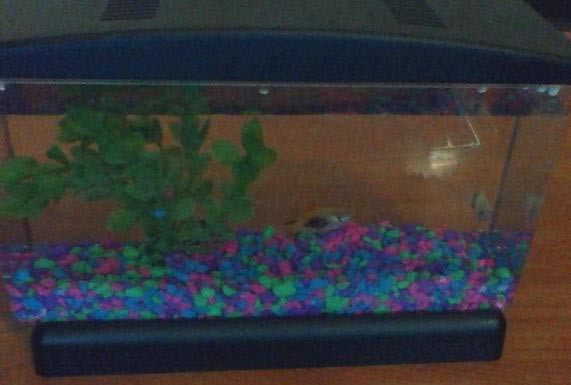 Molly Fish
Question
Fish tank Black fish
I have 4 ne
Molly Fish
Question
Fish tank Black fish
I have 4 ne
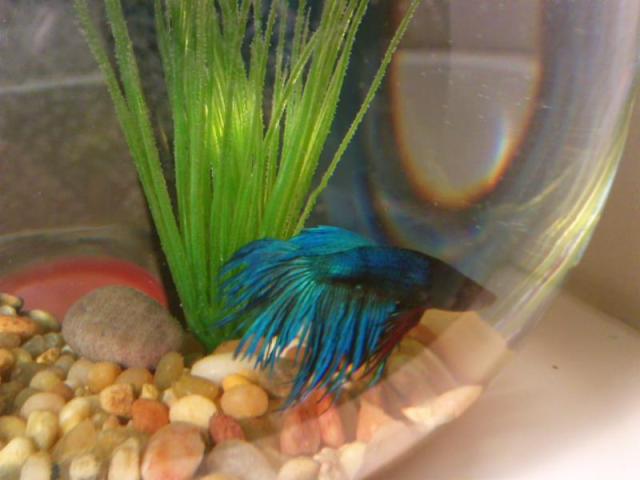 new betta fish with black dust spots
Question
ferdie
just brought home a new betta an
new betta fish with black dust spots
Question
ferdie
just brought home a new betta an
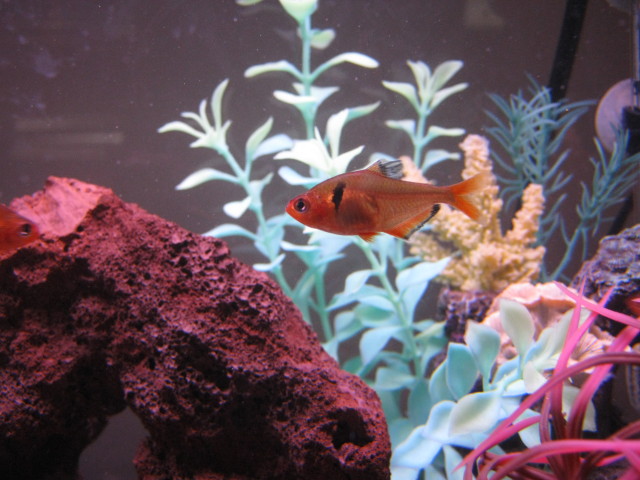 aggression or disease?
Question
tetra fin
Hi, I have a 15 gallon freshwater ta
aggression or disease?
Question
tetra fin
Hi, I have a 15 gallon freshwater ta
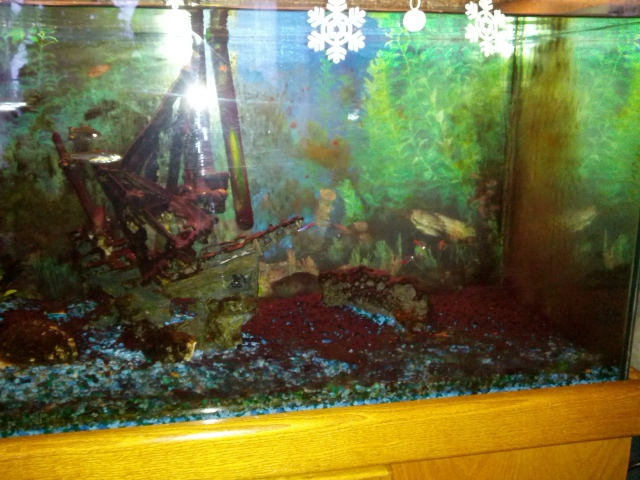 Fish Aquarium mold?
QuestionAquarium
QUESTION: Hi, I have a 75 gallo
Fish Aquarium mold?
QuestionAquarium
QUESTION: Hi, I have a 75 gallo
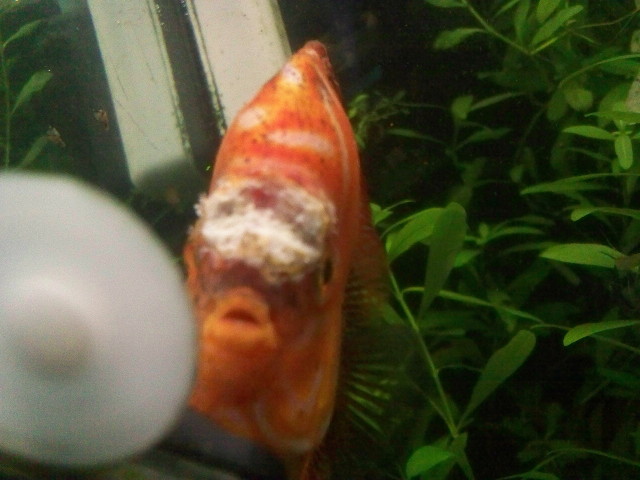 Discus Open Wound
QuestionDiscus Sore
QUESTION: Hello,
My 2 year o
Discus Open Wound
QuestionDiscus Sore
QUESTION: Hello,
My 2 year o